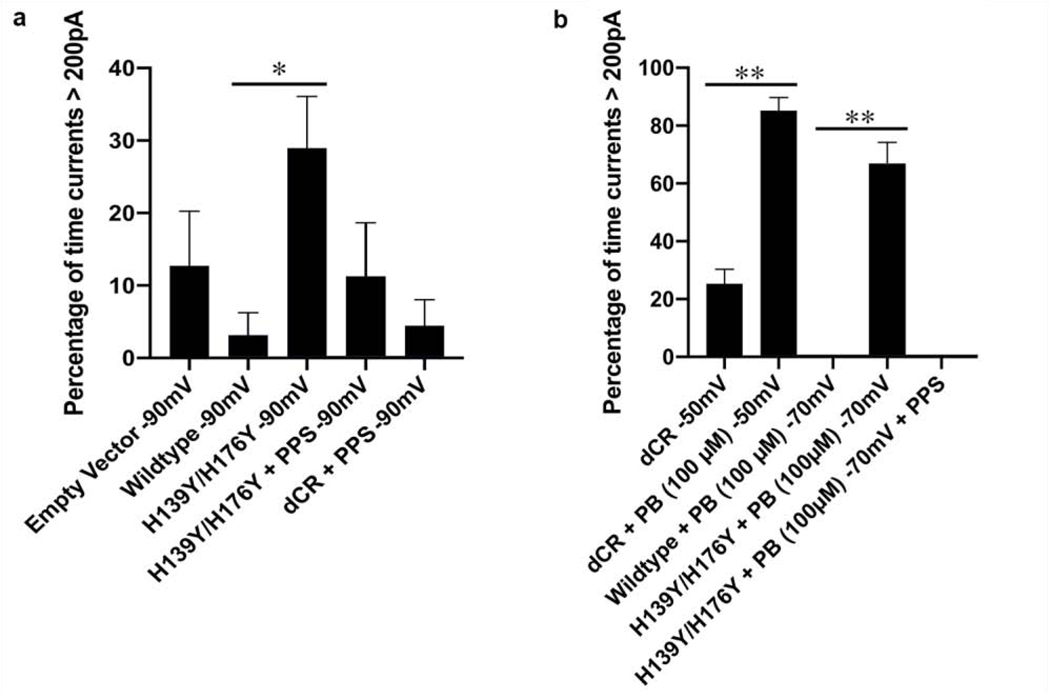Figure 6.
a) Comparison of cells transfected with empty vector (N=10), wild-type PrP (N=5), (H139Y,H176Y) PrP (N=20), and ΔCR PrP (N=10) showing that the H139Y,H176Y mutations significantly enhance spontaneous currents at a hyperpolarized holding potential (−90 mv) (*p=0.045, α=0.05, one tailed two sample t-test), and these currents are suppressed by the addition of pentosan polysulfate (PPS). b) Comparison of cells expressing wild-type PrP (N=10), (H139Y,H176Y) PrP (N=10), and ΔCR PrP (N=9) showing that the H139Y,H176Y mutations significantly enhance spontaneous currents at −70 mV in the presence of pyrenebutyrate (**p<0.00001) , and these currents are suppressed by pentosan polysulfate. The ΔCR mutation enhances currents in the presence of pyrenebutyrate, even at −50 mV (**p=<0.00001). Error bars show the standard error of the mean.

